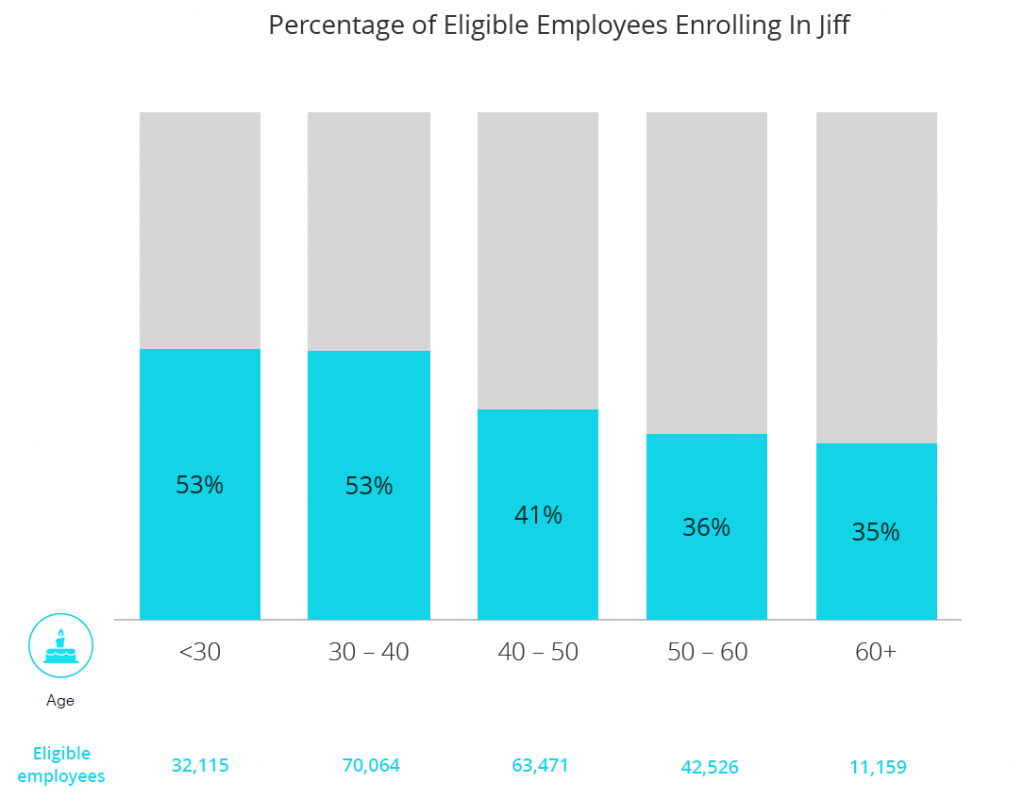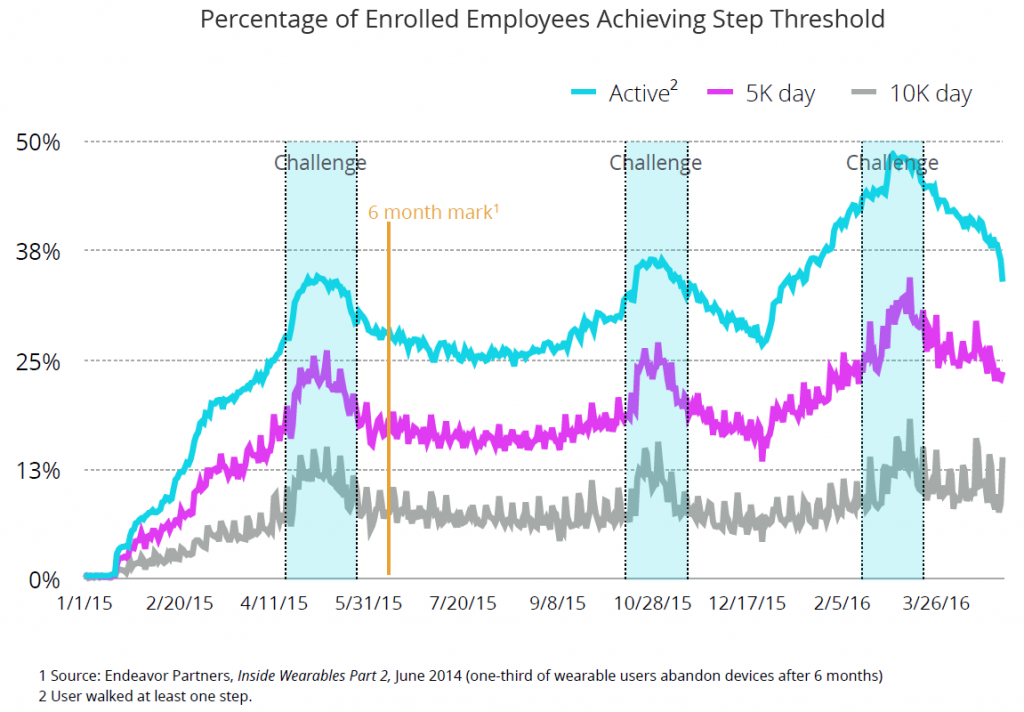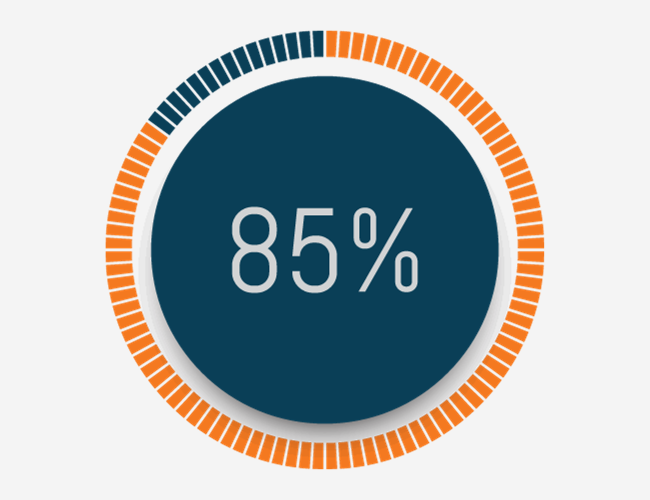A study published by Jiff evaluated two years of employer-sponsored wearable data and revealed a number of interesting points, many of which counter common beliefs about these technologies. Below are some of the highlights that we found most interesting.
Workplace Wearables Are Popular And Increasingly So
Nearly one out of three (31%) large employers (> 1,000 employees) offered wearable devices for tracking physical activity in 2016. That number could increase to as much as 50% with 6% and 17% of employers planning for wearable purchases in 2017 and 2018, respectively.
Extra fun fact (not related to wearables): App sponsorship is also on the rise. Respondents to the survey revealed that 26% and 19% of employers sponsored apps to track employee diets and sleep.
Wearables Are For More Than Just Millennials
Employers do not need to feel that sponsoring wearable devices can be justified because it is of interest to the largest part of the workforce (millennials). Based on user data from 219,335 employees enrolled in a company-sponsored wellness program, millennials are not the only generation adopting wearables. Just over half of all employees under 40 participated in the wearable program (and there was no difference between those in their 20s and 30s). Forty-one percent of those age 40-50 participated, compared to 36% of workers age 50-60 and 35% of those over 60.

Sustained Engagement Through Challenges
Despite industry analysis suggests 70% of Fitbit users churn in less than 12 months, the study found that employers could sustain engagement for much longer through periodic corporate-sponsored wellness challenges. Across four large employers customers, there was “no measurable decline in engagement for more than nine months following the program rollout, and for one employer, the study found levels of engagement that have been progressively increasing for more than 18 months.” To be fair, 14 employers were involved with the full study, and since only a limited of number were included in this portion, there may be some selection bias confounding the results.

The study went on to suggest three things employers could do deliver success in their wellness programs: (i) offer wellness challenges, (ii) provide device credits (subsidies for wearables), and (iii) deliver behavioral incentives (action-based rewards). We could not agree more with this assessment, which is why we offer and encourage use of all three of these options in the Wellable Wellness Challenges platform. Not mentioned in the report but highly advocated by us is the BYOD wellness strategy that allows employees to use the devices and apps that make the most sense to them. Employers can reallocate the funds traditionally reserved for devices to other engagement enhancing elements of their programs, such as rewards.














